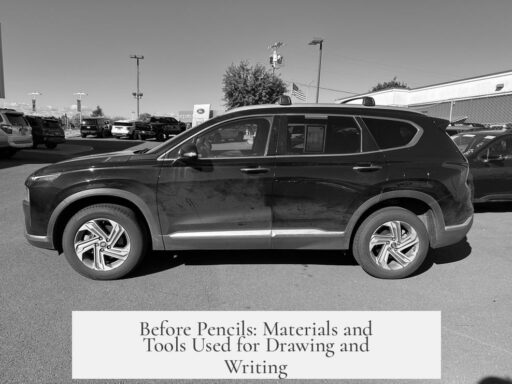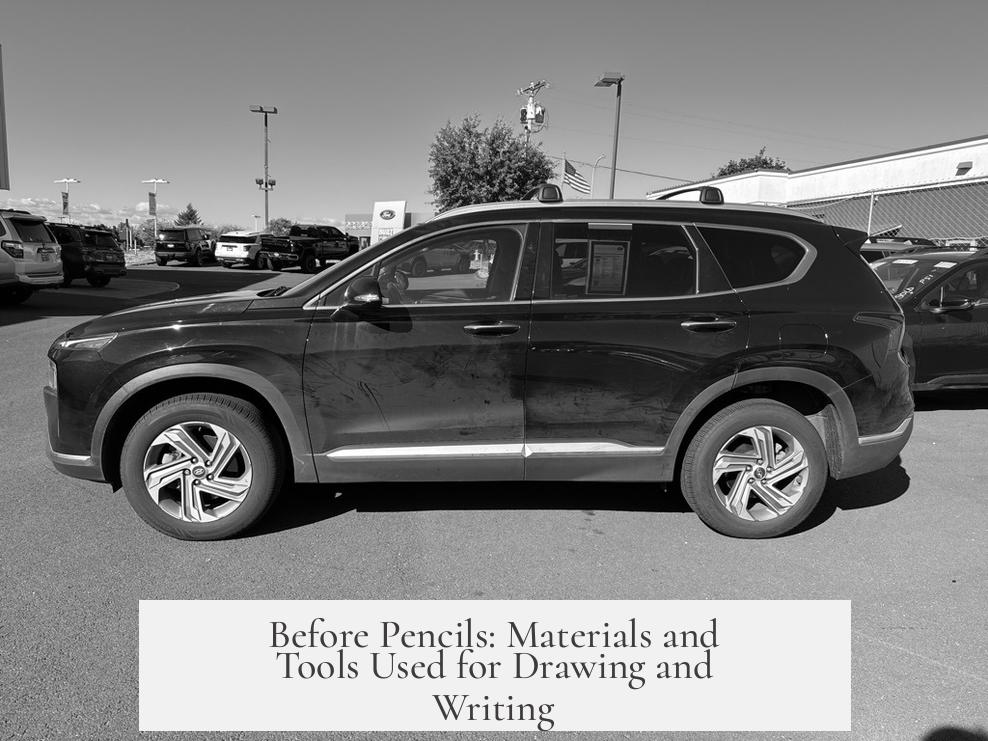Before pencils, people used several drawing tools such as silverpoint, black chalk, and charcoal, each with unique properties and applications.
Silverpoint involves drawing with a thin silver wire on specially prepared surfaces like gesso-coated paper or panels. It creates faint gray lines that deepen as they oxidize over time. However, silverpoint does not allow dark, bold lines from pressure alone. Artists build tone by layering multiple strokes. Silverpoint lines cannot smudge or blend easily and erase only by scraping off the surface. Besides silver, metals like lead and gold also served as drawing materials, though silverpoint was the most common in Medieval and Renaissance art.
Black chalk is closer in behavior to modern graphite pencils. It responds to pressure changes, producing darker or lighter lines and can be smudged or blended. Artists have used black, red, and white chalk for varied tonal effects. Michelangelo’s “Pietà” displays the rich tonal range achievable with black chalk.
Charcoal served mainly for sketches and preparatory drawings. It can create deep blacks and blends smoothly. During the Renaissance, charcoal helped outline ideas and shadows before painting. It also aided transferring designs via grid methods.
Artists often combined these materials in one drawing. For example, white chalk highlights appear over silverpoint or black chalk backgrounds for contrast. Pen and ink was another common medium but produces distinctly different visual effects from graphite-like tools.
| Material | Description | Key Traits |
|---|---|---|
| Silverpoint | Thin silver wire on gesso-coated surfaces | Faint lines, oxidizes darken, no smudging, layers build tone |
| Black Chalk | Chalk available in black, red, white | Pressure sensitive, blendable, tonal range |
| Charcoal | Burned wood or organic materials | Deep blacks, smudges easily, preparatory use |
- Silverpoint predates graphite pencils with fine, permanent lines.
- Black chalk offers pressure variation and blending like graphite.
- Charcoal creates bold strokes and was key for sketches.
- Artists mixed mediums for enhanced effects.
What Did People Use Before Pencils?
Have you ever wondered what artists and writers used before the humble pencil became common? Before pencils, people relied on silverpoint, black chalk, charcoal, and other interesting materials to put their thoughts and art on paper. These tools are fascinating—they shaped art and writing for centuries and still have unique qualities that make them special even today. Let’s explore these old-school methods and see how they compare to the pencil.
The Shiny Yet Subtle Silverpoint
Imagine drawing with a thin silver wire instead of a pencil. That’s silverpoint in a nutshell. It was popular from the Middle Ages through the Renaissance, especially in Italy and Northern Europe. Artists and scribes loved it for its fine lines and delicate touch. But silverpoint isn’t your average drawing tool.
Usually, silverpoint was used on paper coated with gesso—a mix of glue and chalk. This coating helps the silver make a faint grey line. And here’s the twist: this grey line actually darkens over time due to oxidation, giving old silverpoint drawings that classic aged look.
However, silverpoint has its quirks. You can’t press harder to get darker lines, like you can with a pencil. To build up shadows and darker areas, artists had to layer multiple strokes. It doesn’t smudge or erase easily either, so artists needed to be very precise. If you messed up, the only fix was scraping off the mark with a blade.
While silverpoint was most common, some artists experimented with lead and even gold wires. But silverpoint’s subtle presence won the popularity contest. Isn’t it wild to think a tiny silver wire made such lasting art?
Black Chalk: A Versatile Pre-Pencil Tool
Black chalk is another material that reminds us of graphite pencils. It offers a range of tones, from light grey to rich blacks. Artists like Michelangelo used black chalk brilliantly, such as in his famous Pietà. This material allowed for expressive lines and shading that could be built up by applying pressure or layering strokes.
Black chalk shares some neat features with graphite pencils. You can smudge it for blending, create soft shadows, or draw sharp lines. It also comes in colors like red and white, giving artists even more options for their creations. If you’re used to soft pencil shading, you’ll appreciate how black chalk reacts similarly. Plus, it’s great for blending and transforming drawings into rich, dynamic images.
Charcoal: The Sketch Artist’s Companion
Charcoal is probably the closest cousin to pencils when it comes to ease of use and tonal variety. Used widely for preparatory sketches and preliminary drawings, charcoal let artists explore ideas before committing to paint or ink. Since the Renaissance era, charcoal was a staple for outlining, shading, and even creating squaring grids to transfer designs onto panels or canvases.
Why choose charcoal over silverpoint or chalk? Charcoal is soft, easy to blend, and creates deep blacks quickly. However, it can be messy—smudging everywhere if you’re not careful. Yet, that smudging also allows for rich gradients and expressive strokes that pencils shine at today. It was a favorite for artists who needed fluidity in their creative process.
Mixing It Up: Combining Materials
Back then, artists didn’t limit themselves to one medium. They often combined silverpoint with white chalk to add highlights or layered black and red chalks with charcoal to create more depth and texture. This mix-and-match approach allowed for greater detail and tonal range in their work.
While pen and ink was also popular for writing and detailed drawings, it had a very different feel compared to graphite pencils. Ink is bold and precise but lacks the soft gradations pencils can provide. However, pen and ink held its own for sharp lines and expressive calligraphy.
So, What’s the Takeaway?
Before pencils arrived, artists and writers weren’t left clueless. They used silverpoint for delicate, precise lines; black chalk for tonal richness; and charcoal for bold sketches and shadows. Each material brought something unique to the creative table.
Do you think you could switch back and forth between silver wire and charcoal like Renaissance artists? It might be tough, but it shows how inventive people were with the tools at hand. Next time you grab a pencil, remember: it stands on the shoulders of these fascinating, ancient tools.
Final Thoughts and Tips for Today’s Artists
- Experiment with these materials: Try silverpoint for fine lines or black chalk for shading. It can deepen your understanding of drawing fundamentals.
- Layer gently: Like silverpoint demands, layering can add rich texture without harshness. This can improve pencil drawings too.
- Combine materials: Mix charcoal with chalk or pencil for dynamic effects. Old-school artists knew the value of blending techniques.
- Practice precision: Silverpoint doesn’t erase easily, so tight control over your strokes is key. This can help sharpen skills even when using modern pencils.
So, have you found a favorite among these pre-pencil tools? Or will you stick to your trusty graphite? Either way, the history behind these materials is a story of creativity and adaptability. Isn’t it thrilling to see how far human ingenuity in art has evolved?




